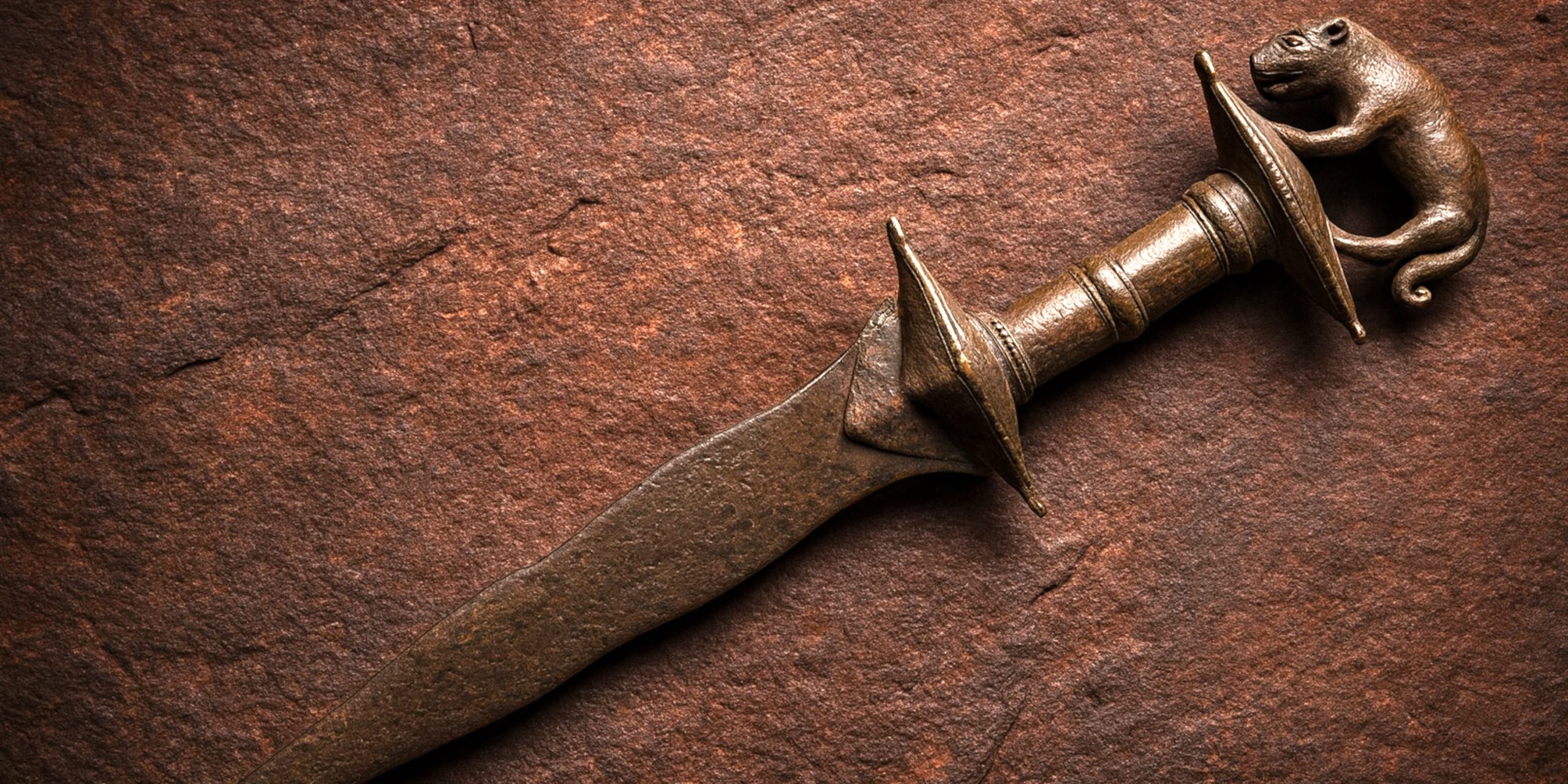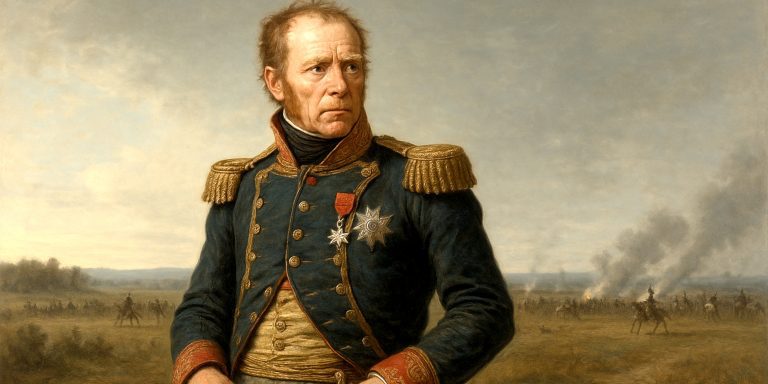
The Benin bronze hilt sword belongs to the ceremonial world of the Kingdom of Benin. These pieces spoke the language of authority, ritual and hierarchy rather than battlefield force. The bronze hilts, cast by the royal guild using the lost wax method, gave each sword a sculptural presence that reflected its owner’s rank and responsibilities.
Specifications
Benin bronze hilt swords follow a formula that pairs a forged iron blade with a richly decorated bronze handle.
General Characteristics
- Cast bronze hilt with figurative or symbolic designs
- Iron blade shaped either leaf like or straight
- Light construction intended for ceremony
- Carried by chiefs and palace officials
Typical Measurements
| Feature | Range |
|---|---|
| Overall Length | 40 to 65 cm |
| Blade Length | 25 to 45 cm |
| Blade Material | Forged iron |
| Hilt Material | Cast bronze |
| Hilt Motifs | Human figures, leopards, attendants, symbols |
| Weight | 400 to 700 grams |
History and Evolution
Benin’s metalworking guilds developed one of the most refined artistic systems in West Africa. The bronze casters who served the Oba created regalia that blended symbolism with artistic precision.
Bronze hilt swords appear in seventeenth century records of processions, ceremonies and diplomatic encounters. They were never simply weapons. They functioned as markers of political rank and ancestral connection.
When European contact intensified, some motifs adapted, but the sword’s essential purpose remained unchanged. Chiefs continued to carry them into the nineteenth century as signs of authority.
Advantages and Disadvantages
Advantages
- Deep artistic and cultural importance
- Bronze hilts survive in excellent long term condition
- Strong appeal for collectors of African regalia
- Clear iconography that reveals court hierarchy
- Represents the finest lost wax work of Benin craftsmen
Disadvantages
- Rare and high in value
- Provenance can be difficult because of the 1897 upheavals
- Ethical concerns about collecting Benin artefacts
- Functional blades are simpler than combat dedicated weapons
Comparison with Similar Weapons
Benin Bronze Hilt Sword vs Yoruba Ida
| Feature | Benin Bronze Hilt Sword | Yoruba Ida |
|---|---|---|
| Purpose | Ceremonial and symbolic | Combat and practical use |
| Hilt | Bronze with sculptural detail | Wood or iron, simpler |
| Blade | Light iron blade | Broader cutting blade |
| Cultural Role | Palace and court hierarchy | Widespread weapon of Yoruba regions |
Benin Bronze Hilt Sword vs Ashanti Akrafena
| Feature | Benin Sword | Akrafena |
|---|---|---|
| Use | Ritual and prestige | Ritual and battlefield capable |
| Decoration | Highly figurative bronze | Gold sheet and sacred patterns |
| Blade | Lighter blade | Broader and stronger |
Legacy
These swords stand among the most recognisable royal objects from the Kingdom of Benin. They illuminate the political relationships, ancestral traditions and ceremonial life of the court. Their presence in museums also fuels ongoing debates around restitution and cultural ownership.
Where to See Benin Bronze Hilt Swords
Many examples appear in major museums, although several collections are under provenance review.
- British Museum, London
- Pitt Rivers Museum, Oxford
- Metropolitan Museum of Art, New York
- National Museum of African Art, Washington DC
- Museum of Ethnology, Vienna
- Weltmuseum, Vienna
- Rijksmuseum, Amsterdam
- Benin Royal Museum project in Nigeria
Collectors Guide
Authenticating and collecting these swords demands care and expertise. Genuine examples must come with solid provenance and clear signs of traditional craftsmanship.
What Collectors Look For
- Verified pre nineteen hundred provenance
- Traditional lost wax casting features
- Natural patina across bronze and iron
- Recognised guild motifs
- No modern casting flaws or artificial ageing
Authentication Tips
- Inspect surface texture and casting seams
- Compare motifs with museum examples
- Check documentation rigorously
- Avoid items with ownership gaps after 1897
Auction Prices
Auction values vary based on condition and proven origin.
| Condition | Provenance | Typical Auction Range |
|---|---|---|
| High quality, fully documented | Pre 1897 | £15,000 to £40,000 |
| Good quality, partial provenance | Late nineteenth century | £5,000 to £12,000 |
| Damaged or unclear provenance | Variable | £1,000 to £3,000 |
Prestige linked pieces can exceed £50,000 but raise significant ethical considerations.



